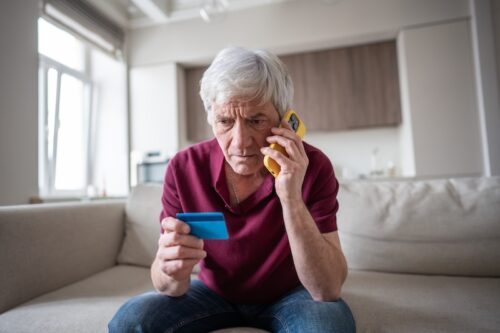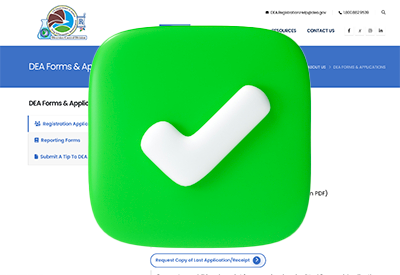ADHD, Stimulants, and Substance Use

Sara Polley, MD, Chief Medical Officer, Ellie Mental Health.
Dr. Polley has no financial relationships with companies related to this material.
TCPR: How do you approach ADHD in patients who use cannabis?
Dr. Polley: Some providers take hard lines like, “My patient smokes cannabis (marijuana) and they have a positive urine drug screen (UDS), so I do not prescribe stimulants.” I try to have a more nuanced approach. We discuss lifestyle factors that worsen executive function, including cannabis use, but I don’t get very far by telling people what’s going to happen to them. They need to experience it for themselves. We make a shared decision about medication. If a stimulant is not going to cause serious harm, I put guardrails up and we go on that journey together.
TCPR: Do stimulants help ADHD with cannabis use?
Dr. Polley: Possibly. I’ve seen patients improve when we start a stimulant. They see improvements in their ADHD symptoms and sometimes smoke less cannabis. In general, we improve quality of life when we treat ADHD. On the other hand, we don’t have much evidence that stimulants treat ADHD all that well when there is co-occurring cannabis use disorder (CUD). There are studies of methylphenidate and atomoxetine, plus a small one of high-dose Adderall extended release (80 mg), and these didn’t show a benefit (Levin FR et al, J Atten Disord 2024;28(11):1467–1481). But these are not high-powered studies, and they focus on more severe cases—those with CUD, not cannabis use. I think my approach helps with patient alignment, rapport, and retention. These patients have high rates of treatment dropout, so that’s on the front of my mind.
TCPR: What are the risks?
Dr. Polley: Psychosis is a big one. People who use cannabis already have an increased risk of psychosis, and adding a medication that can cause psychosis is risky. I would not start a stimulant if they have any history of psychosis, including cannabis-induced psychosis. Another risk is stimulant misuse and diversion, which is more common in college students. I’ll address that directly: “People are probably going to ask you to share your Adderall. That is illegal and can be dangerous, and I won’t be able to continue to prescribe if I am concerned this is happening.”
TCPR: How does the patient’s age factor into this?
Dr. Polley: In adolescence, the brain is still developing, and that’s where the risks of cannabis are greater: before age 25. So, we’re more likely to see psychosis or derailment of executive function when teens use cannabis, including decreased IQ and impulsivity (Kiburi SK et al, Subst Abus 2021;42(4):527–542). I will be a bit more parental with teens: “Exposing yourself to THC right now is like putting a toxin into the front part of your brain. It can cause brain damage that can last even into your adult years, especially if you have other risk factors like ADHD or a family history of addiction.” I bring the parent in to have a family discussion and hopefully start contingency management at home to decrease their use. With adults, the risks are less severe but still present. This is something we have to talk about because cannabis use is common, especially in young adults, and often normalized. It’s legal in over half the US states.
TCPR: That might explain why cannabis interferes with stimulants. Is there a threshold where cannabis use starts to cause executive problems?
Dr. Polley: That’s something we don’t know. Hopefully someday we’ll have more data on quantity and frequency, like we do for alcohol. At this point, many adults view cannabis like alcohol. They smoke a bit on the weekend or use edible cannabis with friends. As a culture, we normalize alcohol, and I think as physicians, we have much more fear related to cannabis use because it carries more stigma. But alcohol isn’t risk-free just because it’s legal. I talk about cannabis with adults the same way I do about alcohol: “You’re an adult. You want to use an intoxicating substance because you like how it feels. That’s fine, but there are risks—immediate risks like intoxication, car accidents, and memory problems, as well as long-term risks like damage to your brain and body.”
TCPR: What is the role of cannabidiol (CBD) in this?
Dr. Polley: I used to think CBD was snake oil, but as I’ve looked into the research, I see a lot of promise. CBD is one of the 100 or so cannabinoids in cannabis, and it’s also used as a prescription medication for rare forms of epilepsy (Epidiolex). CBD does not increase dopamine in the reward pathway. It is minimally psychoactive and protects against some of the negative impacts of THC on the brain, lowering the risk of psychosis from THC (Johnson K et al, Front Psychiatry 2024;15:1386263). Unfortunately, as cannabis gets legalized, the manufacturers are not spending a lot of time thinking about CBD or the ratio of CBD to THC as a means to provide health protection. Instead, they are focusing on providing the highest THC content possible. It makes the product more addictive and more profitable.
TCPR: Does CBD reduce cannabis use?
Dr. Polley: It’s being explored for that. There was a positive Phase II trial in adolescents and adults who took CBD 400–800 mg daily (Freeman TP et al, Lancet Psychiatry 2020;7(10):865–874). It was small, and a larger Phase III trial is underway. That’s interesting because a lot of medications have failed, including the synthetic version of cannabis—dronabinol. I’d love to have a safe over-the-counter product I could suggest for people. I usually just make sure to advise against smoking CBD, since it’s not a good idea to put things into your lungs. It comes in other forms like edible and topical.
TCPR: Do you recommend any medications for CUD?
Dr. Polley: My go-to in teens and young adults is N-acetylcysteine (NAC), which is used as a prescription to treat acetaminophen overdose but is available over the counter. It’s a precursor to glutathione, the main antioxidant in the central nervous system. NAC reduced cannabis use in a randomized trial of teens and young adults (ages 15–21) but then failed in a similar trial of adults with doses of 1200 mg BID (Gray KM et al, Am J Psychiatry 2012;169(8):805–812). Gabapentin and naltrexone also had positive trials in adults, but these were small, proof-of-concept studies (Mason BJ et al, Neuropsychopharmacology 2012;37(7):1689–1698; Haney M et al, Neuropsychopharmacology 2015;40(11):2489–2498). So the data are very limited with meds. I consider both NAC and naltrexone pretty low risk and often suggest them along with other psychotherapeutic interventions.
TCPR: How do you explain NAC to patients?
Dr. Polley: NAC works best when the patient is motivated to stop but cravings are getting in the way. There is some thought it may help with risk reduction in patients who plan to continue to smoke by decreasing the amount they use. Many patients say they don’t get as good a high while on it, so if they aren’t motivated to quit cannabis, they sometimes won’t stick with it. In that way, it’s similar to naltrexone in alcohol use disorder, which reduces the rewarding effects of drinking. In my experience, it either works really well or not at all.
TCPR: What brands do you recommend?
Dr. Polley: I’m not too picky with the brands. Consumer Labs tested a dozen of them and they all passed. The most cost-effective are Life Extension and NOW. I often recommend Pure Encapsulation as well. With CBD oil, it’s more difficult to find a good product. Many brands have trace THC in them, and it’s very expensive to get the doses used in psychiatric trials (eg, $150–$300 per month for 300 mg daily). Only a few brands were THC-free in Consumer Labs testing: cbdMD, Garden of Life, Green Roads Relax, and MedTerra. Among them, cbdMD Broad Spectrum Gummies is the most affordable ($180 per month). Many patients like to vape CBD. From a harm reduction standpoint, this is better than THC but still risky for the lungs.
TCPR: Tell me more about how you talk with patients about cannabis and ADHD.
Dr. Polley: I’m transparent. I educate patients. I want them to have a good life, and I don’t decide what a good life is—they decide that because it’s their life. Here’s an analogy. When we treat substance use disorders, there is this extra layer of stigma and countertransference that we don’t have with disorders like hypertension. When we tell people with hypertension to eat healthy and reduce salt, they may say things like, “I know, I am trying, but it is hard” or, “I don’t think it makes a difference and I like these foods.” We don’t withhold their antihypertensive medication because they are eating too much salt or because they aren’t willing to improve their diet. We keep working together toward health. Similarly, we don’t withhold ADHD treatment from people using nicotine or caffeine. Both raise the cardiovascular risks with stimulants, but they don’t carry the same stigma as THC.
TCPR: What do we know about ADHD and nicotine?
Dr. Polley: I tell patients, “This stimulant will raise your heart rate and blood pressure, and nicotine and caffeine will raise it even more, which puts extra strain on your heart and raises the chance of heart problems.” Most of the time they figure this out when they have a venti latte with the amphetamine and it causes sweating, palpitations, headache, and jitteriness. On the other hand, if they stop caffeine abruptly they get withdrawal headaches, so most taper down slowly on their own. Nicotine is harder to stop. I see it cause problems with sleep. When patients who use nicotine report insomnia on a stimulant, I’ll advise them to either cut down on the evening nicotine or lower the stimulant dose.
TCPR: What about alcohol and stimulants?
Dr. Polley: Stimulants can block some of the sedative effects of alcohol. That means some people will still be walking around doing things with a higher blood alcohol concentration. They are awake for more risky behaviors like driving, use of other substances, and risky sexual activity.
TCPR: What about patients who take methadone or buprenorphine for maintenance addiction treatment?
Dr. Polley: ADHD increases the risk of substance use disorders, so a lot of people with opioid use disorder had childhood ADHD that wasn’t diagnosed (Abel KF et al, Eur Addict Res 2017;23(6):298–305). I’ll get collateral information and look for ADHD in their history. This is a controversial area, but if they are still having executive dysfunction and nonstimulants don’t help, I will prescribe a stimulant to treat the ADHD. Another place where you’re likely to see a history of ADHD is in methamphetamine use disorder, and here the use of stimulants is even more controversial.
TCPR: How so?
Dr. Polley: There are several reasons to consider stimulants in patients with past meth use. These include:
1) ADHD that began before the meth use
2) Cognitive problems resulting from meth-induced neurotoxicity
3) Prevention of relapse into meth use
That last one is the most controversial. While there is some evidence for long-acting methylphenidate to prevent relapse, the American Society of Addiction Medicine (ASAM) recommends that psychiatrists have specialized addiction training to manage it (ASAM Clinical Guideline Committee, J Addict Med 2024;18(1S Suppl 1):1–56).
TCPR: What about for the other two uses?
Dr. Polley: The guidelines don’t require specialized training for those, but they do recommend closer monitoring for misuse and diversion. That may include UDS, pill counts, family input, more frequent clinical contact, and more frequent checks of the prescription drug monitoring program. ASAM also recommends using methylphenidate over amphetamines when there is a history of methamphetamine use, and using extended-release formulations over instant release when possible.
TCPR: How do you talk with patients about the risk of addiction when prescribing a stimulant?
Dr. Polley: I don’t want my patients to feel shame or assume that I think they’ll misuse it. I say, “Sometimes these medications can trigger the addiction pathway because they increase dopamine in the brain. If that happens, it is not your fault. It’s a known effect in the brain and a risk of exposing your brain to these medications. It will mean we will need to stop the medication. I don’t want to accidentally make your addiction worse.”
TCPR: Do you use similar medications for past cocaine use disorder?
Dr. Polley: Yes. Meth and cocaine have similar effects and similar treatments, and many patients go back and forth between the two drugs.
TCPR: How do you use UDS?
Dr. Polley: I use UDS differently with teens compared to adults. With teens, I incorporate it into a larger plan involving their parents and behavioral or contingency management. They earn rewards and freedoms at home if they have negative screens. In a young person with ongoing THC use and a family or personal history of psychosis, I am extremely cautious with stimulant prescriptions and may monitor with UDS. With adults, I use UDS when the clinical picture doesn’t make sense. For example, if a patient starts having decreased need for sleep or paranoia when they are otherwise stable on buprenorphine and also on a stimulant for ADHD, I’ll order a UDS to see if there are any other drugs that might be causing the change in symptoms and pause the stimulant until we know what is going on.
TCPR: What do you do when a relative calls to say that your patient—an adult with ADHD—is misusing the stimulant?
Dr. Polley: I usually schedule a visit with the patient and the relative. I’ll say, “Your wife says this is happening. Can you fill me in on what’s been going on?” Most of the time we get down to the real story. I treat people with empathy and respect when I have these conversations, saying things like: “I know you are just trying to do your best. I want to take care of you and make sure you are safe and healthy.” We make a plan to move forward, which might include a UDS, closer monitoring, increased psychosocial supports, or switching to a nonstimulant.
TCPR: Thank you for your time, Dr. Polley.
Newsletters
Please see our Terms and Conditions, Privacy Policy, Subscription Agreement, Use of Cookies, and Hardware/Software Requirements to view our website.
© 2025 Carlat Publishing, LLC and Affiliates, All Rights Reserved.



_-The-Breakthrough-Antipsychotic-That-Could-Change-Everything.jpg?1729528747)



